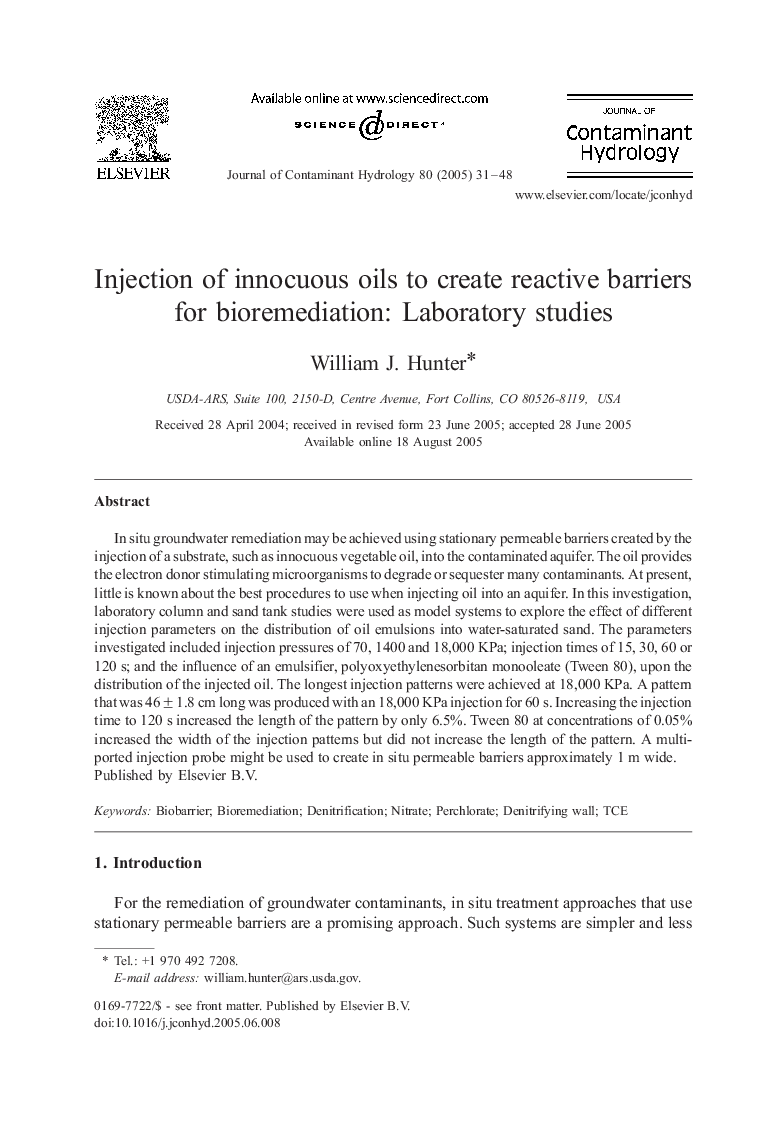| کد مقاله | کد نشریه | سال انتشار | مقاله انگلیسی | نسخه تمام متن |
|---|---|---|---|---|
| 9482793 | 1627146 | 2005 | 18 صفحه PDF | دانلود رایگان |
عنوان انگلیسی مقاله ISI
Injection of innocuous oils to create reactive barriers for bioremediation: Laboratory studies
دانلود مقاله + سفارش ترجمه
دانلود مقاله ISI انگلیسی
رایگان برای ایرانیان
کلمات کلیدی
موضوعات مرتبط
مهندسی و علوم پایه
علوم زمین و سیارات
فرآیندهای سطح زمین
پیش نمایش صفحه اول مقاله

چکیده انگلیسی
In situ groundwater remediation may be achieved using stationary permeable barriers created by the injection of a substrate, such as innocuous vegetable oil, into the contaminated aquifer. The oil provides the electron donor stimulating microorganisms to degrade or sequester many contaminants. At present, little is known about the best procedures to use when injecting oil into an aquifer. In this investigation, laboratory column and sand tank studies were used as model systems to explore the effect of different injection parameters on the distribution of oil emulsions into water-saturated sand. The parameters investigated included injection pressures of 70, 1400 and 18,000 KPa; injection times of 15, 30, 60 or 120 s; and the influence of an emulsifier, polyoxyethylenesorbitan monooleate (Tween 80), upon the distribution of the injected oil. The longest injection patterns were achieved at 18,000 KPa. A pattern that was 46 ± 1.8 cm long was produced with an 18,000 KPa injection for 60 s. Increasing the injection time to 120 s increased the length of the pattern by only 6.5%. Tween 80 at concentrations of 0.05% increased the width of the injection patterns but did not increase the length of the pattern. A multi-ported injection probe might be used to create in situ permeable barriers approximately 1 m wide.
ناشر
Database: Elsevier - ScienceDirect (ساینس دایرکت)
Journal: Journal of Contaminant Hydrology - Volume 80, Issues 1â2, November 2005, Pages 31-48
Journal: Journal of Contaminant Hydrology - Volume 80, Issues 1â2, November 2005, Pages 31-48
نویسندگان
William J. Hunter,